What is RO Membrane Housing?
RO membrane housing is a crucial component in water treatment systems. It serves as a protective enclosure for the RO membranes, which are instrumental in the process of removing impurities from water through osmotic pressure. The housing is designed to withstand the high pressure generated during the filtration process, ensuring the durability and integrity of the membranes. Typically constructed from materials resistant to corrosion and erosion, the RO membrane housing plays a pivotal role in maintaining the efficiency and longevity of the reverse osmosis system, contributing to the production of clean and purified water.
Advantages of RO Membrane Housing
Mechanical protection
One primary benefit of ro membrane housing is its ability to provide robust mechanical protection to the delicate ro membranes. The housing shields the membranes from external contaminants, physical damage, and pressure variations, ensuring their longevity and optimal performance.
Pressure regulation
Ro membrane housings are designed to withstand high pressures generated during the reverse osmosis process. This pressure resistance is crucial for maintaining the efficiency of water filtration, allowing the membranes to function optimally and ensuring the production of high-quality, purified water.
Chemical resistance
The materials used in ro membrane housing are often chosen for their resistance to corrosion and chemical degradation. This resistance is vital in preventing damage to the housing structure and maintaining the integrity of the membranes, even when exposed to aggressive chemicals present in the water.
Long-term durability
Due to their robust construction and resistance to various environmental factors, ro membrane housings contribute to the long-term durability of the entire water treatment system. Their reliability reduces the frequency of maintenance and replacement, leading to cost savings and sustained performance over an extended period.
Why Choose Us?
R&D
Invests heavily in R&D, continuously improving their product offerings and staying at the forefront of new material technology. dedication to innovation means customers can benefit from cutting-edge solutions.
Customization services
Provide customization services to meet specific customer requirements, ensuring that clients receive products that exactly fit their needs.
Experienced team
The company employs a team of experienced professionals with expertise in new material technologies, ensuring that their products and services are backed by deep knowledge and technical proficiency.
24h online service
We try and respond to all concerns within 24 hours and our teams are always at your disposal in case of any emergencies.
The Manufacturing Process of RO Membrane Housing
Material selection
The choice of materials is crucial in ensuring the durability and compatibility of the ro membrane housing. Common materials include fiberglass reinforced plastic (frp), stainless steel, and occasionally other engineered plastics.
Molding
If the housing is made of fiberglass reinforced plastic (frp), the manufacturing process may involve molding. This includes creating the desired shape and structure of the housing by using molds. Layers of fiberglass and resin are applied and cured to form a strong and durable housing.
Cutting and shaping
The raw materials or molded components are cut and shaped to the specific design of the ro membrane housing. This step involves precision cutting and shaping to ensure the correct dimensions and configurations.
Machining
If the housing is made of stainless steel, machining processes such as cutting, drilling, and welding are used to shape and assemble the metal components. This step is critical for achieving the desired structural integrity.
Assembly
Components, including end caps, ports, and connectors, are assembled according to the housing design. This may involve the use of adhesives, welding, or other fastening methods to ensure a secure and watertight seal.
Surface treatment
Surface treatment processes may be applied to enhance the durability, corrosion resistance, and appearance of the housing. This can include coating applications, polishing, or other finishing techniques.
Testing and quality control
Each housing undergoes rigorous testing to ensure it meets quality standards. This may include pressure testing to verify the housing's ability to withstand operating pressures, leak testing to ensure seals are secure, and visual inspections for any defects.
Application of RO Membrane Housing
Residential water purification
Ro membrane housings are commonly used in home water filtration systems to provide households with clean and purified drinking water. These systems are often installed under the kitchen sink or as part of a whole-house water treatment system.
Commercial and industrial water treatment
Ro membrane housings are extensively employed in commercial and industrial settings to treat water for various purposes. This includes the production of ultrapure water for electronics manufacturing, boiler feedwater for power plants, and process water for industries like pharmaceuticals and food and beverage.
Desalination
In desalination plants, ro membrane housings are used to remove salt and other impurities from seawater, making it suitable for drinking, agriculture, and industrial processes. This application is particularly important in regions facing water scarcity.
Municipal water treatment
Municipalities use ro membrane housings as part of water treatment plants to produce clean drinking water for communities. These systems help remove contaminants and ensure compliance with water quality standards.
Wastewater treatment
Ro membrane technology is applied in wastewater treatment to purify and reclaim water for reuse. This is crucial in industries where water recycling is a priority, and it helps minimize environmental impact by reducing the discharge of pollutants.
Medical and pharmaceutical applications
Ro membrane housings are used in the production of high-purity water for medical and pharmaceutical applications. This includes the preparation of water for injection (wfi) and the production of purified water for use in pharmaceutical manufacturing processes.
Beverage production
In the beverage industry, ro membrane housings are employed to treat water used in the production of various beverages, ensuring the removal of impurities that could affect taste and quality.
Agriculture
Ro technology, along with membrane housings, is used in agriculture for irrigation purposes. It helps remove contaminants and salts from water, preventing soil salinity and ensuring the health of crops.
Laboratory and research facilities
Laboratories and research facilities use ro membrane housings to produce high-quality water for experiments, testing, and other applications where water purity is crucial.
Remote and emergency water purification
Portable ro systems with compact membrane housings are utilized in emergency situations or remote locations where access to clean water is limited. These systems are often used by disaster relief organizations and military units.
Things to Note When Using RO Membrane Housing
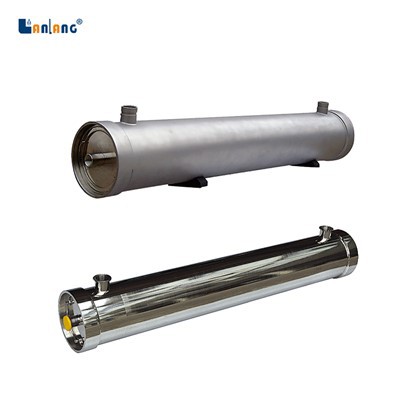
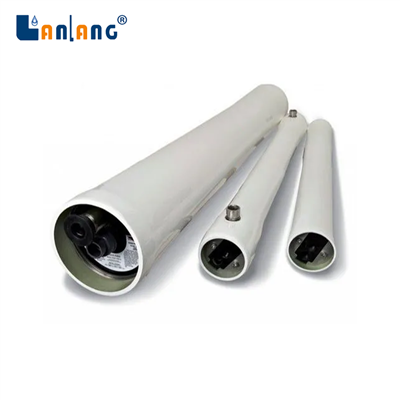

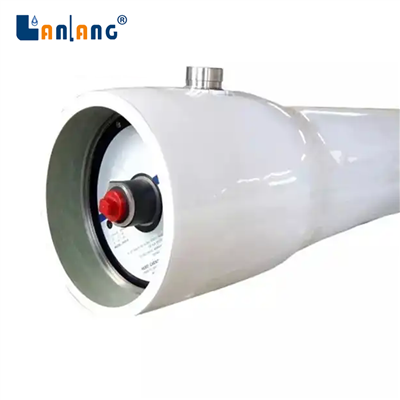
Feedwater quality
The quality of the feedwater entering the ro system significantly impacts membrane performance. Ensure that the water source meets the recommended quality standards, as high levels of contaminants, particulates, or chemicals can adversely affect membrane efficiency and lifespan.
Pre-filtration
Use appropriate pre-filtration systems to remove sediment, chlorine, and other particulates before water enters the ro membrane housing. This helps prevent fouling and extends the life of the ro membranes.
Operating pressure
Maintain the recommended operating pressure for the ro system. Adequate pressure is essential for the membrane separation process. Operating below or above the specified pressure range can affect water production and quality.
Temperature control
Control the temperature of the feedwater. Extreme temperatures can impact membrane performance. Most ro membranes operate within a specified temperature range, so it's essential to adhere to these guidelines.
Chemical compatibility
Ensure that the materials used in the ro membrane housing are chemically compatible with the feedwater. Incompatible chemicals can cause damage to the housing and compromise the integrity of the system.
Regular maintenance
Implement a regular maintenance schedule, including membrane cleaning and replacement as needed. Routine maintenance helps prevent fouling, scaling, and other issues that can reduce system efficiency.
Monitor pressure drops
Regularly monitor pressure differentials across the ro membrane housing. A significant increase in pressure drop may indicate fouling or scaling, requiring attention and potential membrane cleaning or replacement.
Proper installation
Follow the manufacturer's guidelines for the installation of the ro membrane housing. Ensure proper alignment, sealing, and connection of components to prevent leaks and ensure the efficient operation of the system.
Avoid freezing
Protect the ro membrane housing from freezing temperatures. Freezing can damage the housing and membranes. If the system is exposed to cold temperatures, take appropriate measures to prevent freezing.
System flushing
Implement system flushing procedures, especially during startup or after periods of inactivity. Flushing helps remove air pockets, debris, and stagnant water from the system, promoting optimal performance.
Pressure relief valve
Install a pressure relief valve to protect the ro membrane housing and system from excessive pressure. This is essential for safety and preventing potential damage to the membranes.
How to Maintain RO Membrane Housing
Regular inspection
Conduct visual inspections of the ro membrane housing regularly. Check for signs of leaks, corrosion, or physical damage. Inspect the end caps, o-rings, and seals for wear or deterioration.
Pre-filtration maintenance
Check and replace pre-filters and sediment filters as recommended by the manufacturer. Proper pre-filtration helps prevent particles and debris from reaching the ro membranes, reducing the risk of fouling.
Replace o-rings and seals
Inspect o-rings and seals for signs of wear or damage. Replace them if necessary to maintain a secure and watertight seal. Lubricate o-rings with a compatible lubricant as recommended by the manufacturer.
Pressure and flow monitoring
Monitor pressure differentials across the membrane housing regularly. A significant increase in pressure drop may indicate fouling or scaling. Likewise, keep track of flow rates to ensure they are within the specified range.
Membrane cleaning
Perform regular membrane cleaning as needed to remove accumulated fouling or scaling. Follow the manufacturer's recommendations for the appropriate cleaning solution and procedure. Cleaning frequency depends on the quality of the feedwater and operating conditions.
Membrane inspection and replacement
Periodically inspect the condition of the ro membranes. If membranes show signs of damage, degradation, or reduced performance, consider replacing them. Membrane replacement intervals vary based on the water quality and usage.
System flushing
Implement regular system flushing procedures, especially during startup or after periods of inactivity. Flushing helps remove air pockets, debris, and stagnant water, contributing to optimal membrane performance.
Protect from freezing
If the ro system is located in an environment where freezing temperatures are possible, take measures to protect the membrane housing from freezing. Freezing can damage the housing and membranes.
Pressure relief valve check
If the ro membrane housing is equipped with a pressure relief valve, check its functionality periodically. The valve is designed to release excess pressure and protect the housing and membranes.
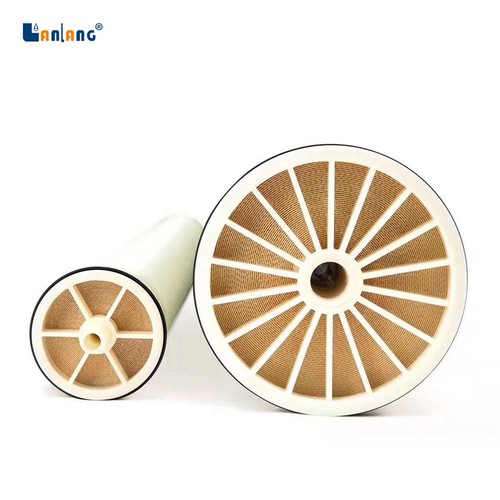
Protection of Ro membranes
The housing shields the delicate ro membranes from physical damage, contaminants, and external elements. It helps maintain the integrity and functionality of the membranes.
Seal and containment
The housing creates a sealed environment for the ro membranes, ensuring that the water undergoing the reverse osmosis process is properly channeled through the membranes and separated into purified water (permeate) and concentrated brine (reject water).
Pressure management
The membrane housing is designed to withstand the operating pressure of the ro system. It contains the pressure generated during the filtration process, allowing the membranes to effectively separate impurities from the water.
Direction of flow
The housing provides a pathway for the feedwater to enter the ro membranes, facilitates the separation of contaminants, and directs the flow of permeate and concentrate streams to their respective outlets.
Connection points
It includes ports and connectors for the inlet (feedwater), permeate, and concentrate streams. These connection points allow for the integration of the membrane housing into the overall water treatment system.
What are the Common Materials Used in the Construction of Ro Membrane Housings
Fiberglass reinforced plastic
Frp is a lightweight and corrosion-resistant material. It is widely used in the construction of ro membrane housings, especially in residential and commercial applications. Frp housings are suitable for various water conditions.
Stainless steel
Stainless steel is known for its strength, durability, and resistance to corrosion. Ro membrane housings made of stainless steel are often used in industrial and high-pressure applications where robustness and longevity are crucial.
PVC
Pvc is a thermoplastic material that is resistant to corrosion and chemical degradation. It is suitable for certain ro membrane housing applications, especially in environments where chemical compatibility is a consideration.
Polypropylene or polyethylene
These plastics are known for their chemical resistance and are sometimes used in the construction of ro membrane housings, particularly in smaller or portable systems.
Acrylonitrile butadiene styrene
Abs is a thermoplastic polymer with good impact resistance and chemical compatibility. It is used in the construction of some ro membrane housings, particularly in residential systems.
Polycarbonate
Polycarbonate is a transparent thermoplastic known for its impact resistance. While less common, it may be used in specific applications where visibility into the housing is required.
What Steps are Involved in the Manufacturing Process of Ro Membrane Housings
Material selection
Choose the appropriate materials based on the application and the desired properties of the membrane housing. Common materials include fiberglass reinforced plastic (frp), stainless steel, polypropylene, and other engineered plastics.
Molding
If the housing is made of fiberglass reinforced plastic (frp), the process may involve molding. Layers of fiberglass and resin are applied to a mold to create the desired shape of the housing. The mold is cured to harden the material.
Cutting and shaping
The raw materials or molded components are cut and shaped according to the specific design of the ro membrane housing. This step involves precision cutting to achieve the correct dimensions and configurations.
Machining
If the housing is made of metal, such as stainless steel, machining processes such as cutting, drilling, and welding are used to shape and assemble the metal components. This step is crucial for achieving the desired structural integrity.
Assembly
Components, including end caps, ports, and connectors, are assembled based on the housing design. This may involve the use of adhesives, welding, or other fastening methods to ensure a secure and watertight seal.
Surface treatment
Surface treatment processes, such as coating applications or polishing, may be employed to enhance the durability, corrosion resistance, and appearance of the housing.
Testing and quality control
Each housing undergoes rigorous testing to ensure it meets quality standards. Common tests include pressure testing to verify the housing's ability to withstand operating pressures, leak testing to ensure seals are secure, and visual inspections for any defects.
Definition
The permeate tube is a conduit or pipe that facilitates the exit of purified water, known as permeate, from the ro membrane housing. It connects to the permeate port on one of the end caps of the housing.
Collection of purified water
During the reverse osmosis process, feedwater containing impurities is pressurized and forced through the ro membranes inside the housing. The semi-permeable membranes allow water molecules to pass through while rejecting impurities.
Separation of permeate and concentrate streams
The permeate tube is responsible for collecting the water that has successfully passed through the ro membranes. This purified water, now referred to as permeate, is separated from the concentrated brine (reject water) that contains the rejected impurities.
Pathway for purified water
The permeate tube serves as a dedicated pathway for the collected purified water to exit the ro membrane housing. It ensures that the permeate stream is channeled appropriately without mixing with the concentrated reject stream.
Directed flow to outlet
The permeate tube directs the flow of purified water towards the outlet of the ro system. Depending on the system design, the permeate may be further treated or directed to a storage tank for later use.
Maintaining pressure
The permeate tube helps maintain pressure within the ro membrane housing. The pressure difference across the membrane is crucial for the separation of water and impurities. The controlled release of purified water through the permeate tube contributes to maintaining optimal pressure levels.
System efficiency
The proper functioning of the permeate tube is essential for the overall efficiency of the ro system. It ensures the efficient collection and removal of purified water, allowing the system to consistently produce high-quality water.
What Steps are Involved in Replacing O-Rings and Seals in an Ro Membrane Housing
Shutdown the ro system
Turn off the ro system and shut off the water supply to the membrane housing. Release pressure from the system by opening a faucet downstream to depressurize the housing.
Drain the housing
If applicable, open the drain port to remove any remaining water from the housing. This helps prevent spills and makes the replacement process more manageable.
Remove end caps
Unscrew or remove the end caps of the membrane housing. Some housings may have multiple end caps; ensure you identify and remove the correct ones.
Access the o-rings
Once the end caps are removed, access the o-rings and seals. These are typically located in the grooves or channels on the inside of the end caps.
Inspect o-rings and seals
Carefully inspect the condition of the existing o-rings and seals. Look for signs of wear, damage, or deterioration. If any issues are detected, it's necessary to replace them.
Remove old o-rings and seals
Gently remove the old o-rings and seals from their grooves using non-abrasive tools such as a plastic scraper or your fingers. Be cautious not to damage the housing or the grooves.
Clean the grooves
Thoroughly clean the grooves where the o-rings and seals are seated. Remove any residue or debris that may affect the sealing process. Use a mild detergent or a specified cleaning solution if needed.
Apply lubricant
Apply a small amount of silicone-based lubricant to the new o-rings and seals. This helps ensure a proper seal, eases installation, and prevents damage during assembly.
Install new o-rings and seals
Carefully place the new o-rings and seals into their respective grooves. Ensure that they are seated properly and evenly. Avoid twisting or pinching the o-rings during installation.
Reassemble the housing
Reattach the end caps, ensuring they are tightened securely. Follow the manufacturer's recommended torque specifications for the end caps to prevent over-tightening or under-tightening.
Pressurize the system
Turn on the water supply to the ro system and pressurize the housing. Check for any leaks around the o-rings and seals. If leaks are detected, recheck the installation and seating of the o-rings.
Flush and test
Flush the system with water to remove any air pockets and check for proper functionality. Monitor the system for any irregularities and ensure that it operates smoothly.
Can you Describe the Key Considerations When Installing an Ro Membrane Housing
Location
Choose a suitable location for the ro membrane housing. It should be easily accessible for maintenance, adequately ventilated, and protected from extreme temperatures. Consider proximity to the water source and where the treated water will be used.
Mounting surface
Ensure that the mounting surface for the membrane housing is sturdy and capable of supporting the weight of the housing, especially in larger systems. Use appropriate brackets or mounting hardware as needed.
Orientation
Install the membrane housing in the correct orientation as indicated by the manufacturer. Ensure that the ports and connectors are positioned according to the system's design and flow requirements.
Secure connections
Make sure all connections, including ports, tubing, and fittings, are securely tightened. Use appropriate tools and follow the manufacturer's torque specifications to prevent leaks.
O-ring lubrication
Apply a thin layer of silicone-based lubricant to the o-rings on the end caps. This facilitates proper sealing and eases the installation process. Avoid using petroleum-based lubricants that may damage the o-rings.
Pressure relief valve
If the membrane housing is equipped with a pressure relief valve, ensure it is installed correctly and positioned to release excess pressure safely. Follow the manufacturer's guidelines for adjustment and testing.
Pre-filtration system
Install a pre-filtration system before the ro membrane housing to remove sediment, particles, and chlorine. Proper pre-filtration helps prevent fouling and extends the life of the ro membranes.
Feedwater quality
Ensure that the feedwater entering the membrane housing meets the recommended quality standards. Poor feedwater quality can lead to membrane fouling and reduced system efficiency.
Proper seating of o-rings
Verify that the o-rings on the end caps are correctly seated in their grooves. Misaligned or damaged o-rings can result in leaks and compromise the efficiency of the ro system.
Air vent
If the membrane housing has an air vent, ensure it is positioned to release trapped air. Proper air venting is important during system startup and helps maintain optimal performance.
Pressure gauges and sensors
Install pressure gauges and sensors if included in the system. These components provide valuable information about the operating conditions of the ro membrane housing.
Labeling and documentation
Label all connections, ports, and components for easy identification during maintenance. Keep detailed documentation of the installation process and any adjustments made.
Start-up procedures
Follow the manufacturer's recommended start-up procedures. This may include flushing the system, checking for leaks, and ensuring proper pressure levels.
Regular monitoring
After installation, regularly monitor the system for any changes in pressure, flow rates, or water quality. This proactive approach helps identify potential issues early on.
Why are O-Rings and Seals Critical Components of an Ro Membrane Housing

Watertight seal
O-rings and seals provide a secure and watertight seal between the end caps and the casing of the ro membrane housing. This sealing mechanism is crucial for preventing water leaks, ensuring the separation of feedwater, permeate, and concentrate streams.
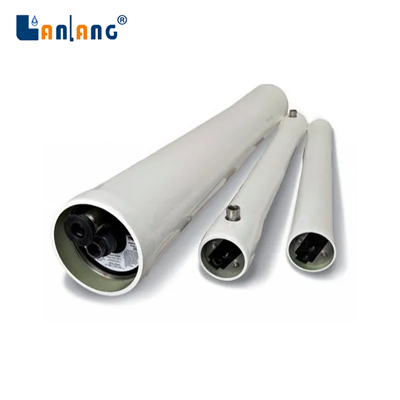
Contaminant prevention
By creating a tight seal, o-rings and seals prevent contaminants, debris, and air from entering the membrane housing. This is essential for maintaining the purity of the permeate and preventing fouling or damage to the ro membranes.
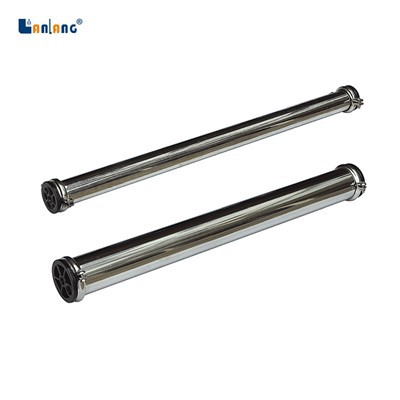
Pressure maintenance
O-rings and seals help maintain the pressure within the ro membrane housing. Proper sealing ensures that the pressure difference required for the reverse osmosis process is maintained, allowing the membranes to effectively separate impurities from the water.
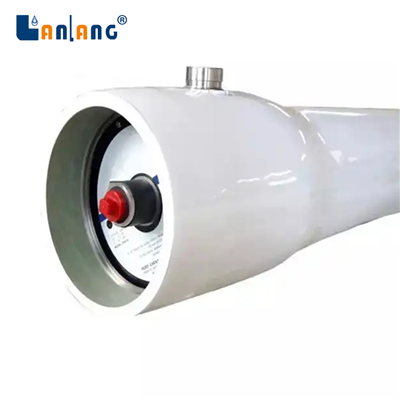
Longevity of ro membranes
The effectiveness of o-rings and seals directly impacts the lifespan of ro membranes. A secure seal prevents bypassing of feedwater around the membranes, contributing to the efficient operation and extended life of the membranes.
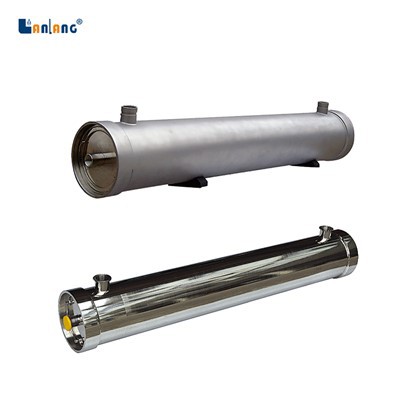
Protection against external elements
O-rings and seals protect the internal components of the membrane housing from external elements such as dust, moisture, and contaminants in the surrounding environment. This protective barrier helps maintain the housing's structural integrity.

Prevention of system downtime
A reliable seal provided by o-rings and seals reduces the risk of leaks and system failures. Regular inspection and replacement of o-rings as part of routine maintenance contribute to system reliability, minimizing the chances of unexpected downtime.
FAQ
As one of the leading ro membrane housing manufacturers and suppliers in China, we warmly welcome you to wholesale ro membrane housing in stock here from our factory. All customized products are with high quality and competitive price.
juice decolorization resin, deodorization resin, FRP Tank for RO Water System












